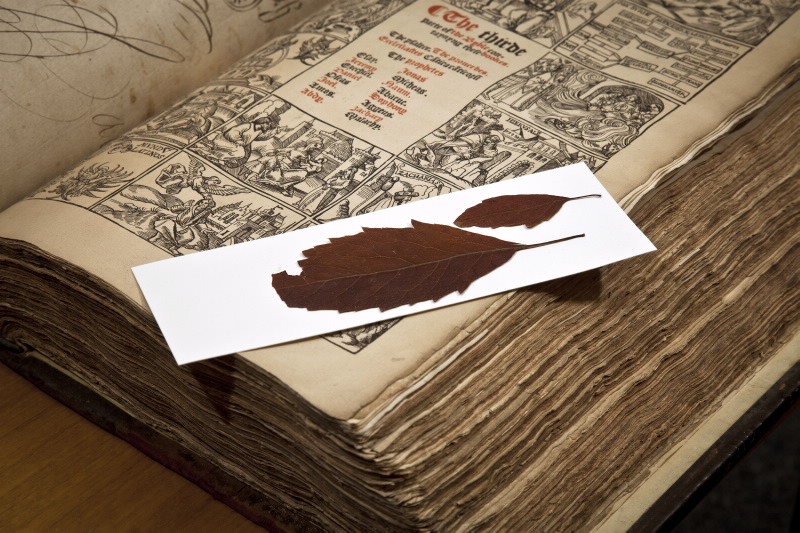Australia’s only nuclear reactor – the Open Pool Australian Lightwater (OPAL) reactor – is part of an international research effort to find more out about a 450-year-old Anglican ‘Great Bible”.
 |
| Bible leaves |
The reactor is being used to study leaves found within its contents to determine where the centuries-old bible has been, where it was made and how old it is.
Three tree leaves were found in the book earlier this year after it was borrowed from the University of Western Australia (UWA) for the first time in more than two decades.
The discovery sparked an international collaboration to find more out about the book's history.
The collaboration has involved the Australian Nuclear Science and Technology Organisation (ANSTO), UWA, and researchers from Dublin and London.
With the expertise this research required, ANSTO’s Head of the Institute for Environmental Research Professor John Dodson, and Leader of the Neutron Activation Analysis Program Dr John Bennett, have summarised the following conclusions about the bible:
- Radiocarbon dates the leaves to around 1560AD (plus or minus 40 years) – which is about the same age as the bible itself.
- Neutron Activation Analysis has ascertained the leaves’ geographical origin. This technique identifies around 65 elements, and revealed:
- Traces of arsenic, mercury and chromium, which potentially means the bible was once kept in Elizabethan England, in a mildly polluted environment;
- Low amounts of selenium, which suggest coal burning was not evident (and it was before the Industry Revolution in any case); and
- Significant amounts of silver and gold, which either came from the bible’s original home, Ely Cathedral, or ink and decoration from the bible itself.
Together with UWA’s Dr Pauline Grierson, who performed oxygen and nitrogen isotope tests, we have confirmed these are Elm Leaves, and date to around 1560AD.
“This is an incredibly exciting example of just how wide-ranging the applications of nuclear science can be,” Professor Dodson said.
“Previously we could only have imagined who placed these leaves as bookmarks: now we know it was likely someone from Elizabethan England.
“It’s remarkable that the same type of technology we used to trace the age and history of these leaves, we use to study water resource management and carbon capture methods for farmers.”
Published: 14/11/2011

